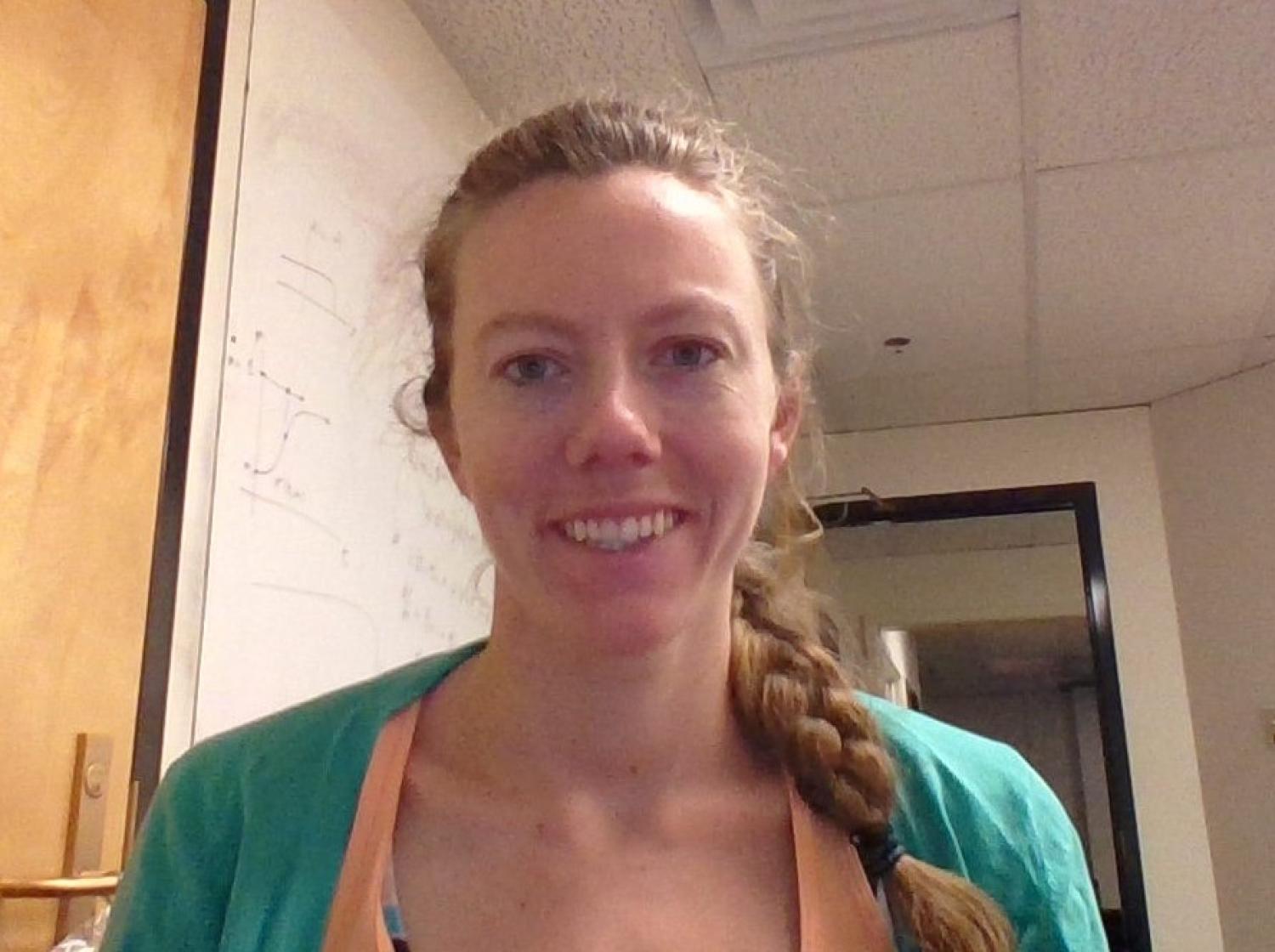IQ Biology Blog: SIAM Life Sciences Conference in Boston

By Jacqueline Wentz
This July I attended the Society for Industrial and Applied Mathematics (SIAM) Conference on the Life Sciences in Boston. It was four days long, packed with talks, poster sessions, and unnecessary amounts of coffee. At the conference, I presented a poster on my latest research examining a molecular mechanism that is associated with aging in C. elegans. There were eight other graduate students from CU Boulder who gave presentations on topics, such as, biofilm dynamics, bacterial flocculation, wound healing, and disease outbreaks.
The SIAM Life Sciences conference is geared towards applied mathematicians who are interested in using their mathematical expertise to help answer biological questions, ranging from questions on intracellular dynamics to epidemiology. Thus, the conference is inherently interdisciplinary. At many of the talks I was pleasantly surprised when I realized that the courses I took during my first year of IQ Biology helped me understand the biological problems discussed. For example, several of the talks dealt with microtubule dynamics, a topic that was extensively covered in the biophysics course I took in the spring. Other talks of note included a discussion of how mathematical modeling helped in the development of an artificial heart valve and an exploration into how the extracellular matrix affects sperm dynamics. I even got to see the notable Donald Knuth discuss the topic of satisfiability (i.e., given a formula, is there a model that makes that formula true). Besides making significant contributions to theoretical computer science, Donald Knuth is the developer of TeX, a computer typesetting language used extensively by mathematicians (myself included).
There were also many presentations that directly related to my research. For example, several talks discussed Turing instabilities. This is a type of instability that can explain how patterns arise from random distributions through a reaction/diffusion process. I am currently studying a system in which, I hypothesize, this type of instability leads to spatial expression patterns of a small heat shock protein in C. elegans. I actually met a PhD student who was examining Turing instabilities in C. elegans, but instead of mechanisms related to aging, she was modeling the development of neuronal synapses.
Overall the conference was a great experience. I was introduced to a group of interdisciplinary scientists who, like me, are interested in biological processes and want to use mathematics to enhance our understanding of these processes. I even had the opportunity to meet my academic “grandfather”, Dr. H. T. Banks. Dr. Banks greeted me at my poster session and explained to me that since he had advised my advisor, Dr. David Bortz, he was my academic grandfather and would treat me as such. Some additional bonuses included exploring the nearby Aquarium, visiting my alma mater, and getting to tour around Boston.
Related content
IQ Biology students win fellowships from NSF
IQ Bio Blog: Interdisciplinarity on Steroids
IQ Bio Blog: Night at the Museum
IQ Bio Blog: Science in pictures
IQ Bio Blog: Workshop on Genomics
IQ Biology Blog: Computing Machinery and Mouse Genomes
IQ Biology Blog: My experience with Evolution

